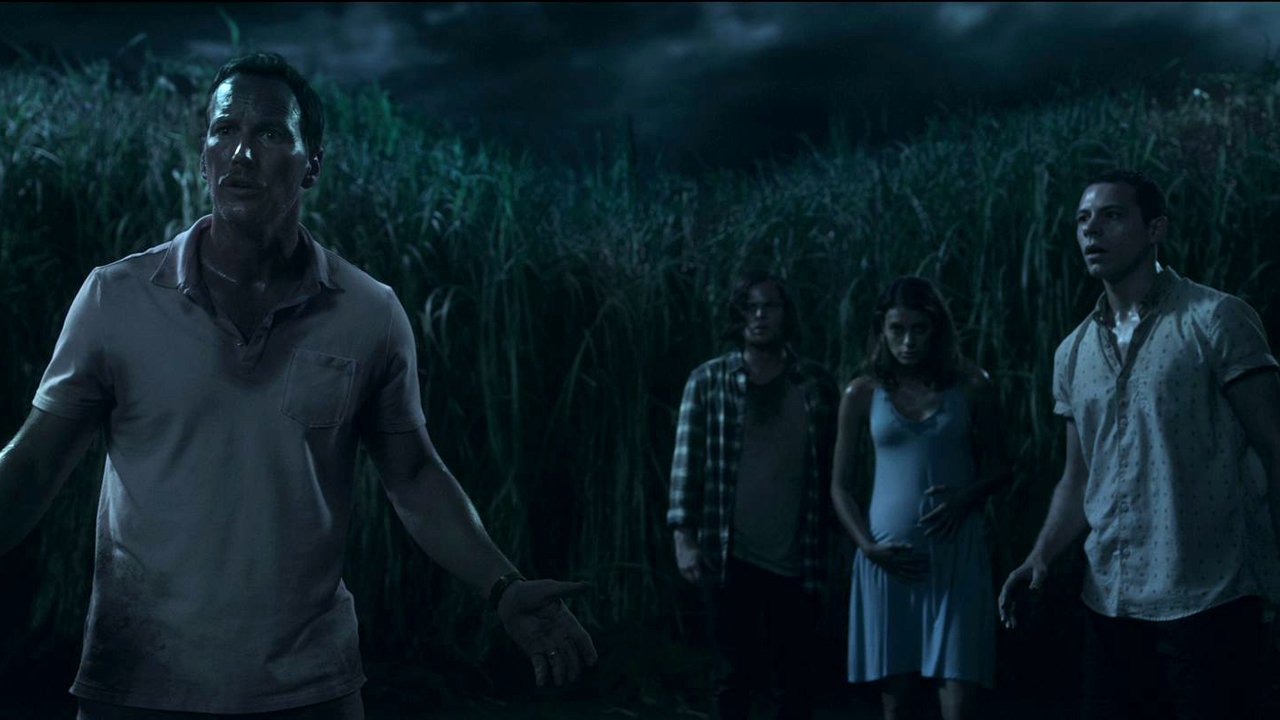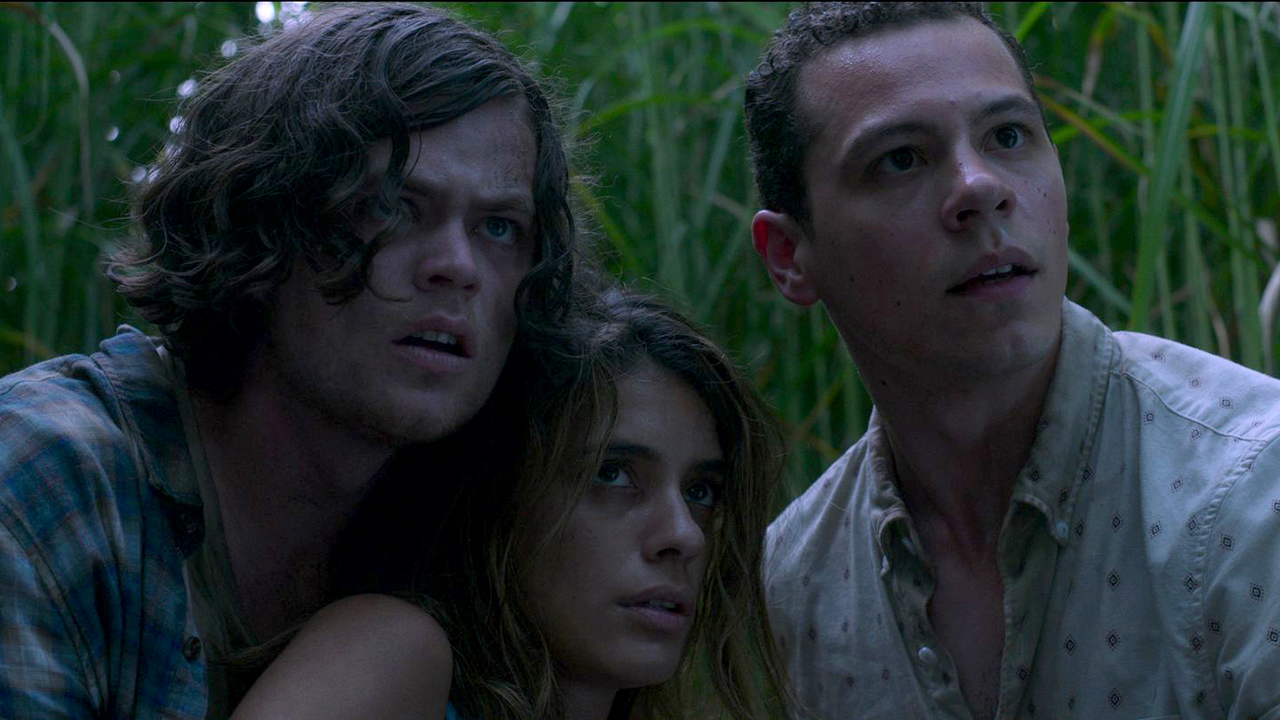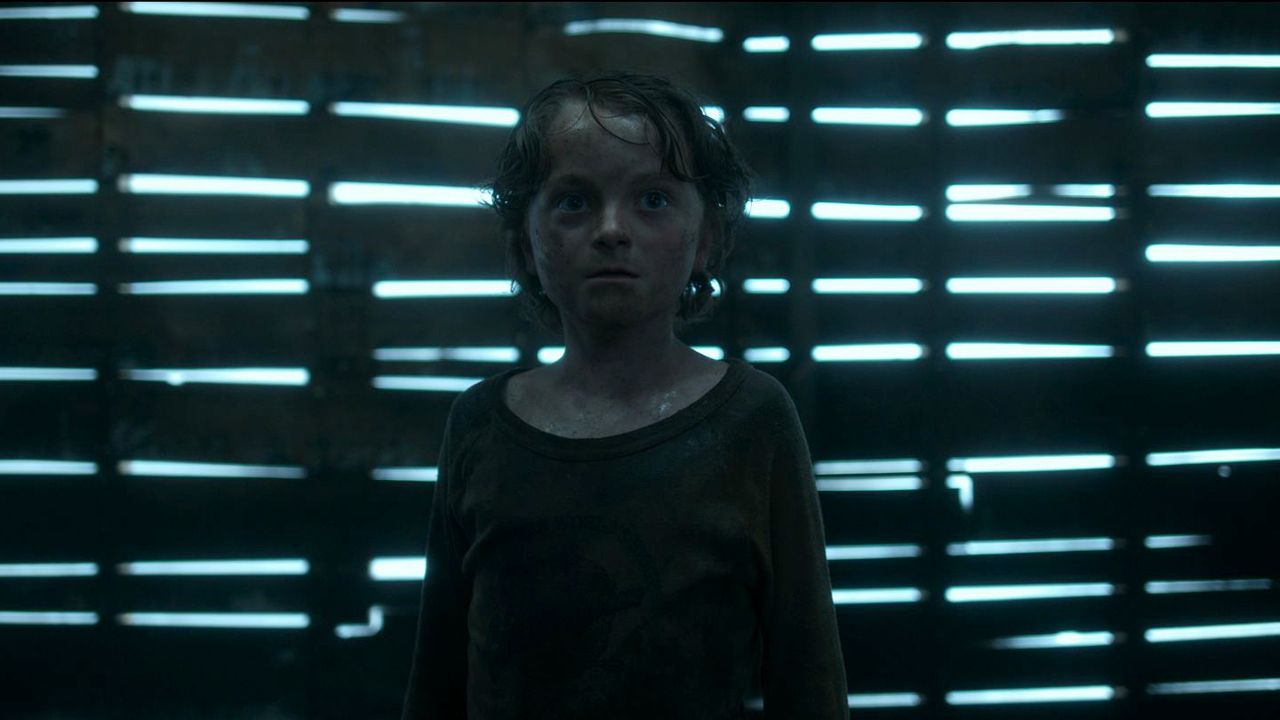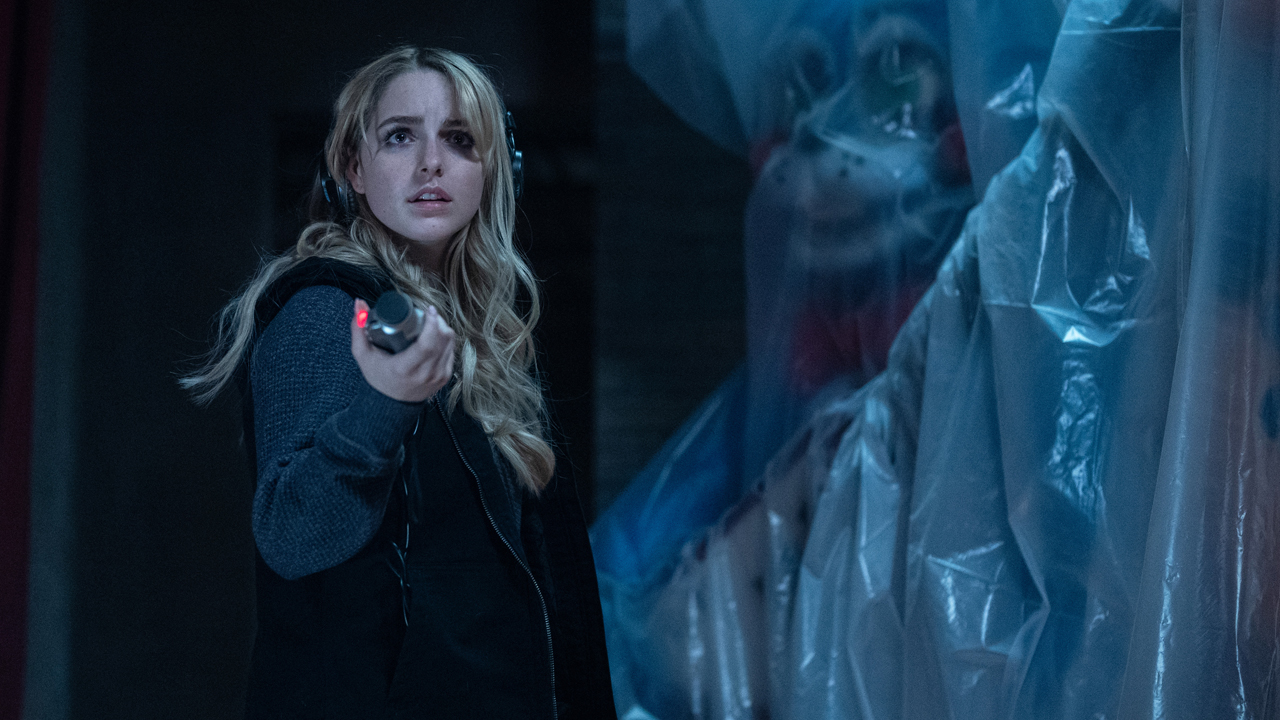Adapting Stephen King's In The Tall Grass: The 2019 Netflix Movie Actually Makes Grass Scary
Don't get lost.

Among Constant Readers, 2017 is remembered for the Stephen King renaissance in Hollywood, but 2019 was the year where we saw the industry capitalize. On the big screen, fans got to see Kevin Kölsch and Dennis Widmyer’s Pet Sematary, Andy Muschietti’s IT Chapter Two, and Mike Flanagan’s Doctor Sleep (next week!), and the executives at Netflix got into the action as well. Having clearly been impressed with the reception for both Flanagan’s Gerald’s Game and Zak Hilditch’s 1922, the streaming service got back into the King adaptation game with the development of Vincenzo Natali’s In The Tall Grass.
The project initially started to get on its feet in 2015 – a rare year that saw the release of zero Stephen King adaptations. It was at that time that Altitude Film Sales started shopping In The Tall Grass, based on the novella of the same name co-written by King and his son, Joe Hill. Natali was attached to both write and direct, his name carrying a great deal of genre cred thanks to credits including Cube, Splice, and episodes of Hannibal, but initial efforts to get the film off the ground at the Cannes Film Market didn’t pan out.
As history shows, it was merely just a tad before its time. Almost exactly three years later (a little more than six months after the release of Gerald’s Game and 1922), the project was back at the Cannes Film Market, and Netflix seized the opportunity to make a new Stephen King movie. While there were early talks with James Marsden about starring that got derailed by scheduling conflicts, Patrick Wilson, Laysla De Oliveira and Harrison Gilbertson were officially cast as production began in August 2018, and a little over a year later In The Tall Grass was offered as a treat to stream just a few weeks prior to Halloween 2019.
There is a considerable amount of the film that sets it apart from its source material, but it’s a case where everything that’s added elevates the original story, and everything from the original story is still honored and treated well. It’s a freaky movie that sports one of the most gruesome moments in the history of Stephen King adaptations, and a fun subject for dissection in this week’s Adapting Stephen King.

What “In The Tall Grass” Is About
In the mid-to-late aughts, Joseph Hillström King – the son of Stephen King – attempted to pull the wool over the literary world’s eyes in Richard Bachman-esque fashion. Wanting to be a professional writer and hoping to avoid any kind of supposition of nepotism, he wrote and published a collection of short stories, 20th Century Ghosts, and his first novel, Heart-Shaped Box, with an abbreviated version of his name. He nixed the “-ström” and the “King,” and the works hit store shelves with the author identified as Joe Hill.
What was not Richard Bachman-esque was how quickly the truth was revealed. While Stephen King was able to publish four novels in about seven years with his secret pseudonym, Joe Hill was outed as his famous father’s son just a month after Heart-Shaped Box’s release in early 2007. Thankfully, the news did nothing to derail Hill’s career, as he has spent the years since becoming a very successful writer in his own right – with a bibliography including books, short stories, comics… and collaborations with his dad.
The first King/Hill team-up arrived in 2009 when the two men co-wrote the novella “Throttle” – which was included in the Richard Matheson tribute anthology He Is Legend – and a few years later the father-son duo got together to pen “In The Tall Grass.” First published in two parts across the June/July and August 2012 issues of Esquire magazine, the story is reminiscent of “Children Of The Corn” in that it explores horrors to be found during a road trip through the vast emptiness of Middle America. Instead of being set in Nebraska, it takes place in Kansas, and instead of the terror coming from a group of murderous, youthful zealots, it comes from miles of seven-foot-tall grass.
Your Daily Blend of Entertainment News
Cal Demuth and his pregnant sister Becky are traveling across the country to San Diego to stay with their aunt and uncle until Becky delivers her out-of-wedlock baby, and trouble starts when they are driving past a field and hear the shouts of a young boy begging for help. The kid, who identifies himself as Tobin, says that he and his mother, Natalie, have been lost for days, and he asks Cal and Becky to rescue them by guiding them back out to the road. Believing that the boy and his mom are just a few feet away, the Demuths walk into the grass – but they get separated and immediately get lost. They try to call out to each other, but the location of their voices seems to change at random, and jumping straight up to see over the grass results in them seeing landmarks shift around with each attempt.
The circumstances are dire and terrible, and they only grow worse. Tobin’s father and Natalie’s husband, Ross, is also in the grass and he has gone fantastically mad – and the cause is a massive obsidian rock that sits in the middle of everything and takes influence over anyone who touches it.

How Vincenzo Natali’s In The Tall Grass Differs From Stephen King’s Novella
Stephen King and Joe Hill’s “In The Tall Grass” is officially described as a novella, but that term is perhaps a bit generous as it reflects on the work’s length. Unfortunately, “long short story” is a ridiculous way to label anything, so “novella” is what we’re stuck with.
This is a roundabout way of saying that “In The Tall Grass” is not “Rita Hayworth And Shawshank Redemption,” and Vincenzo Natali had to exercise his creative muscles in adding to the material so that he could make a feature-length film.
The basic premise remains the same, with Becky (Laysla De Oliveira) and Cal (Avery Whitted) driving through Kansas and getting lured into the grass by Tobin (Will Buie Jr.) – though the siblings’ reason for traveling is changed, as the intention is to meet with prospective adoptive parents in San Diego instead of relatives. Natalie (Rachel Wilson) and Ross (Patrick Wilson) have roles that mostly reflect their counterparts in the novella, though the former’s role is lightly reduced while the latter’s is expanded.
Inarguably the most significant change that Natali makes with In The Tall Grass is the film’s use of Travis McKean (Harrison Gilbertson), the father of Becky’s unborn child. In the novella, he is only featured in a flashback/dream sequence where he rejects parental responsibilities, but the adaptation turns him into a protagonist. While on the road searching for Becky and Cal, he ends up getting lured into the grass and both meets Tobin and becomes a source of conflict between the siblings (due to the fact that Cal hates him for knocking up his sister). Every scene he is in does not have precedence in the source material.
Travis’ arrival adds more substance to the narrative, and it also ends up adding to the horror of being lost in the tall grass. Vincenzo Natali latches on to the idea of time working differently and sprints with it – turning the field into a realm of nonlinear chaos. Travis ends up somehow arriving both after and before Becky and Cal get lost, and events get repeated and looped back on.
Having touched the rock at the center of the field, Ross is hooked into this temporal shifting, and it adds to his monstrous behavior, as not only does he kill Natalie (as he does in the novella), but he also strangles and kills Cal multiple times. This ends up creating another change from Stephen King and Joe Hill’s novella, as it means that Cal never touches the rock – which further enhances Ross’ antagonist role.
In the original version of the story, it’s Cal and Tobin who end up feeding Becky her newborn baby (while also sharing in the meal themselves), but in the movie it’s Ross – who appears to Becky as Cal while she is in a hallucinatory state. Travis ends up killing Ross after Ross is blinded by Becky and she dies, and while Becky never touches the rock like her on-page counterpart, Travis does, and he ends up using the experience and the information he gains from it to save Becky and Cal by ostensibly sending Tobin back in time. It’s a wholly original ending.
With the changes that are made by Vincenzo Natali, there are some standout elements from “In The Tall Grass” that don’t get adapted at all. This includes a sequence where Cal tries and fails to light a fire; the dream with Becky escaping the grass and babysitting a young girl; Kansas locals moving the cars into the church parking lot; and the coda ending featuring a group of hippies getting lured into the grass during an impromptu picnic.

Is It Worthy Of The King?
Because it was released in between IT Chapter Two and Doctor Sleep, Vincenzo Natali’s In The Tall Grass isn’t remembered as the standout Stephen King adaptation of 2019, but it can be dubbed the most underrated. It gets a bit sloppy toward the end – with its vague introduction to the idea of “holes” in the grass, and the movie being broken up with a sequence with Becky, Cal, Travis and Cody arriving at an abandoned bowling alley – but it’s excellent and creepy as a claustrophobic cinematic experience.
While Children Of The Corn movies have failed to capture the eeriness of the titular crop, Natali and cinematographer Craig Wrobleski do a tremendous job trapping the audience in the tall grass and giving it powerful and foreboding presence. This is accomplished technically through the camera work and also the fantastic sound design that adds an extra dimension to the work and makes the environment all the more disorienting and haunting. Along with the terrific narrative tools that the writer/director uses to power the eponymous vegetation into a full nightmare, watching the movie will make anyone fear the wild grass they see along the sides of long stretches of highway.
In The Tall Grass isn’t an all-time great Stephen King movie, but it does stand among the best in recent years, and Vincenzo Natali’s treatment of the source material is particularly impressive. He has since added to the history of adaptations further by directing two episodes of The Stand streaming series (look for my column on January 4, 2023), but it would be easy to get excited about him directing movie or TV show based on a book from the canon.

How To Watch Vincenzo Natali’s In The Tall Grass
Like both Mike Flanagan’s Gerald’s Game and Zak Hilditch’s 1922, Vincenzo Natali’s In The Tall Grass was produced as a Netflix exclusive, and a Netflix exclusive it remains. Not only is the movie not available on any other streaming service, but it is not available for digital purchase at any online outlets. Furthermore, for those of you trying to build the Ultimate Stephen King Collection, it remains an irksome title, as it has not been given a release on physical media.
As noted all the way back at the start of this article, next week’s Adapting Stephen King will be doing a deep dive into the cinematic miracle best known as Mike Flanagan’s Doctor Sleep – based on the novel of the same name. Look for the feature in the CinemaBlend Movies section on Wednesday, and between now and then you can discover all of my previous features by clicking through the banners below.







Eric Eisenberg is the Assistant Managing Editor at CinemaBlend. After graduating Boston University and earning a bachelor’s degree in journalism, he took a part-time job as a staff writer for CinemaBlend, and after six months was offered the opportunity to move to Los Angeles and take on a newly created West Coast Editor position. Over a decade later, he's continuing to advance his interests and expertise. In addition to conducting filmmaker interviews and contributing to the news and feature content of the site, Eric also oversees the Movie Reviews section, writes the the weekend box office report (published Sundays), and is the site's resident Stephen King expert. He has two King-related columns.
